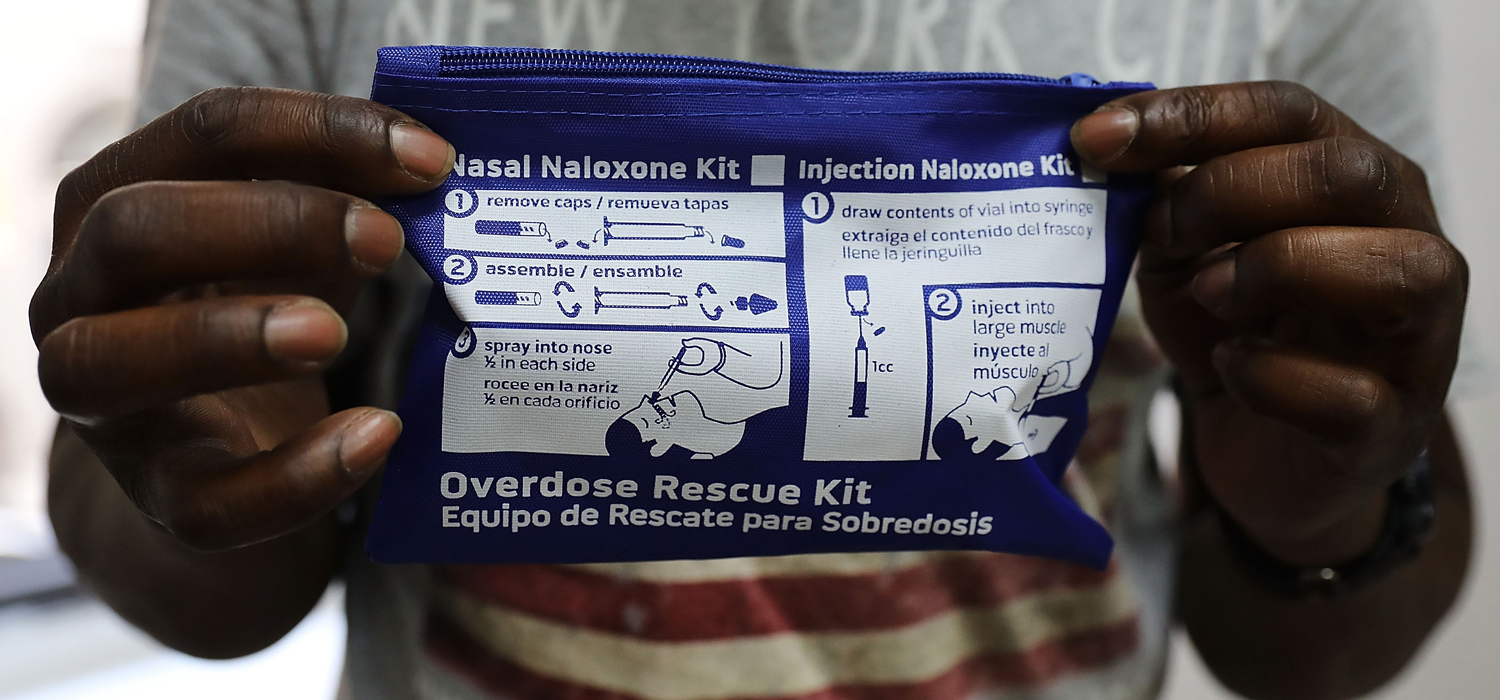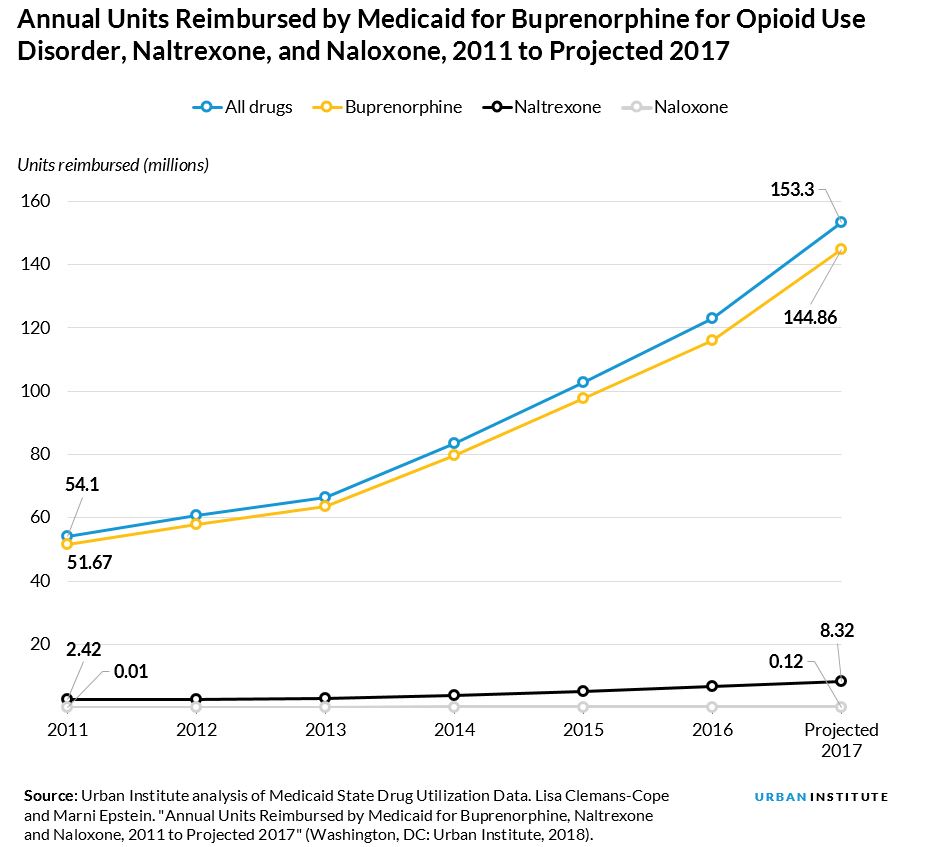
<p>Derrick, a participant in a class on opioid overdose prevention held by non-profit Positive Health Project, holds up an overdose rescue kit on August 9, 2017 in New York City. Photo by Spencer Platt/Getty Images.</p>
Medicaid and the Affordable Care Act (ACA) Medicaid expansion have substantially expanded evidence-based treatment for people with opioid use disorder since 2014. While this is good news, our research suggests that states might need even more funding than previously thought to adequately address the sharp increase in need for drugs that treat opioid use disorder and overdoses.
Last year, we looked at Medicaid spending on medications for treating opioid use disorder and overdoses to better understand the breadth of the opioid crisis and found that spending on treatment increased between 2011 and 2016, particularly in Medicaid expansion states.
In a new analysis of these data (from 2011 through 2017), we focus on the quantity of treatment medications reimbursed by Medicaid, which reveal dramatic growth in treatment and the importance of Medicaid in addressing the opioid crisis.
Our data and measure
We use the State Drug Utilization Data from the Centers for Medicare and Medicaid Services that has information on Medicaid prescriptions for buprenorphine, naltrexone, and naloxone, but not methadone, another effective treatment. Our data include two measures of medication quantity: prescriptions and units. We focus on Medicaid reimbursement for units of medication, which reflect the quantity of medication in each prescription. Units may not always equate to a medication dose, but units are a better measure of the amount of the drug prescribed than the number of prescriptions, because the amount of the drug can vary in each prescription. See the table notes for information about our data and methods.
The data show a large, rapid, and ongoing expansion in treatment across almost all states
In this new analysis that shows state-level data, we show that between 2011 and 2017, the number of units paid for by Medicaid on treatment prescriptions for buprenorphine (limited to products that are approved by the US Food and Drug Administration for treating opioid use disorder), naltrexone, and naloxone increased 183 percent, from 54.1 million units to 153.3 million units. The average annual increase in the number of units paid for by Medicaid over that time was 19 percent nationally, with faster growth in the later years.

For the three Medicaid treatment drugs we examine, we find the following:
- Most of the increase went to buprenorphine—also called Suboxone or Subutex—for which the total units paid for by Medicaid increased 180 percent between 2011 and 2017, from 51.7 million to 144.9 million units.
- The number of units reimbursed for naltrexone—also called Vivitrol, which blocks the effects of opioids, making it impossible to get high—increased 244 percent, from 2.4 million in 2011 to 8.3 million in 2016.
- The number of units reimbursed for naloxone—the lifesaving drug used to reverse opioid overdoses, including Narcan nasal spray, Evzio injections, and generics—increased 1,109 percent, from 9,920 units in 2011 to 119,948 units in 2016.
Rapid expansion in treatment is needed, and the Medicaid program is providing a large boost in access to care. But the Medicaid spending increases that states might need to address the opioid crisis in the coming years could be greater than currently envisioned, and federal and state policymakers need to eliminate barriers to care, including regulations that limit access to buprenorphine treatment.
Download excel table for Annual Units Reimbursed by Medicaid for Buprenorphine, Naltrexone and Naloxone, 2011 to Projected 2017.
The title of this post was edited to include opioid treatment drugs. Updated 03/27/2018.
Let’s build a future where everyone, everywhere has the opportunity and power to thrive
Urban is more determined than ever to partner with changemakers to unlock opportunities that give people across the country a fair shot at reaching their fullest potential. Invest in Urban to power this type of work.